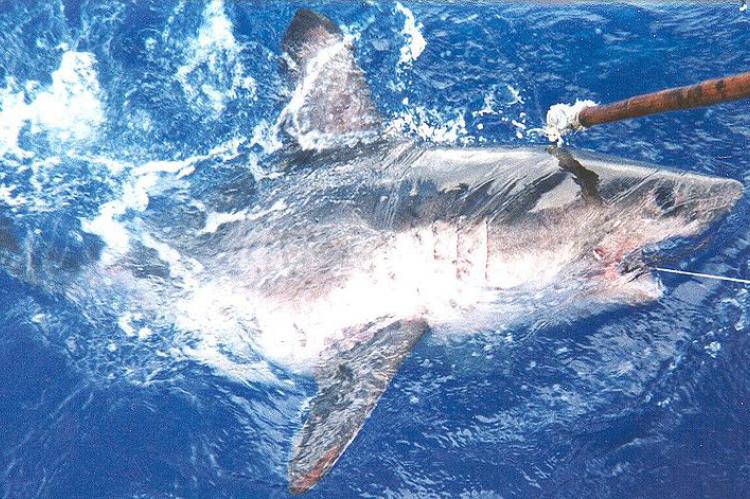New research reveals life history of salmon sharks
Until recently, cousin of great white poorly studied by science
As the saying goes, you are what you eat. Researchers at Stanford University's Hopkins Marine Station are using this adage to better understand the life history of the salmon shark. An important apex predator and cousin of the great white, this far-ranging species roams the entire North Pacific Ocean, from Alaska to the warm sub-tropics of Hawaii and the Baja Peninsula
“Until relatively recently, it’s been pretty poorly studied,” said Aaron Carlisle, a researcher with Stanford University's Hopkins Marine Station in Monterey. “Salmon sharks just for some reason kind of fell through the cracks.”
Salmon on the menu
Despite their relative obscurity, the sharks are fished in Alaska when they arrive in autumn to feed on congregating salmon. Wanting to know more about the sharks’ travels, Carlisle and his team turned to an experimental process in which isotopes are taken of the sharks’ vertebrae. Possessing skeletons composed entirely of cartilage, annual growth bands are laid down like the rings of a tree. By comparing their chemical "fingerprints" to that of known prey items found in different regions of the North Pacific, researchers determined where these sharks were feeding, all the way back to the very beginning of their lives. Research revealed some sharks that visited Alaska turned up near the research center on Monterey Bay, along with Hawaii and Baja California.
Tracking
The team is using the isotope track in conjunction with traditional electronic tagging to get a more elaborate picture of the sharks’ travels.” What’s really becoming cutting edge,” said Hopkins research coordinator Steve Litvin, “is using these advanced techniques together to give us much deeper knowledge than we ever could with only one.” Stanford researchers may also attempt to utilize isotope tracing with other marine life, including white sharks.
Information collected about the sharks could be used by fishery managers to set regulations for shark protection, such as continuing bans on gill nets in areas that salmon sharks frequent. “If you actually want to conserve and manage the population,” Carlisle said, “what you really need to understand is the survival.”
Until relatively recently, it’s been pretty poorly studied. Salmon sharks just for some reason kind of fell through the cracks.


